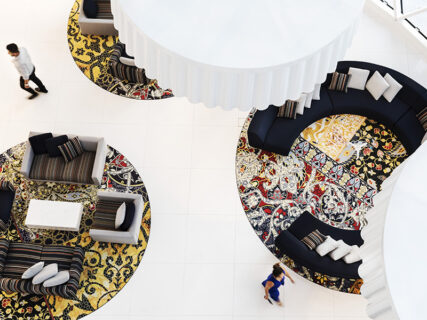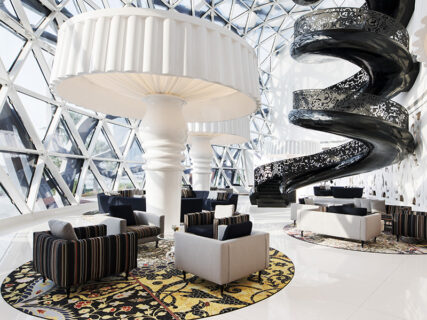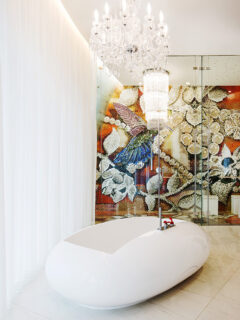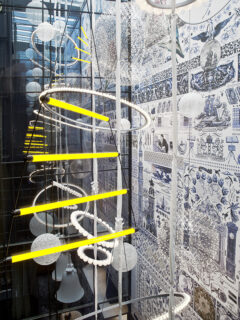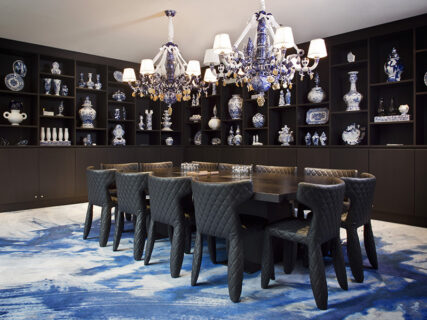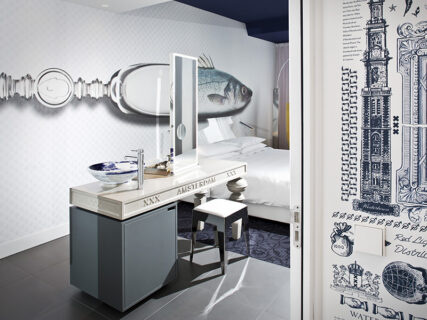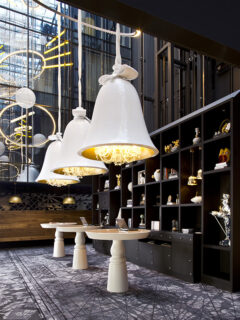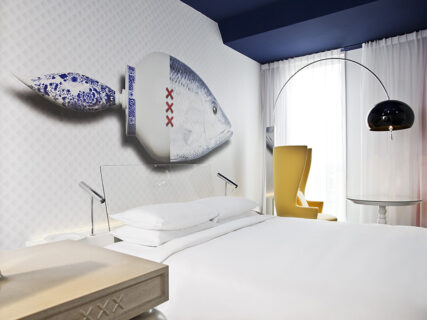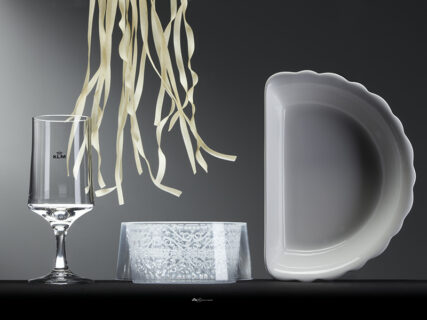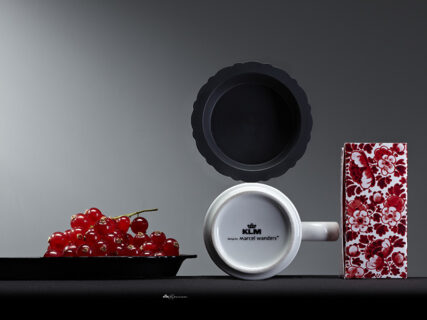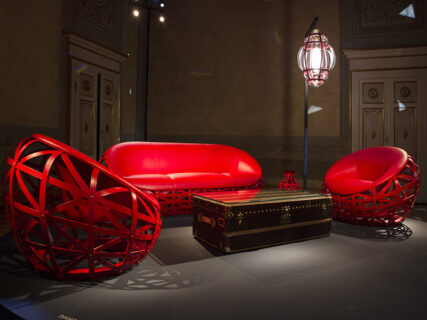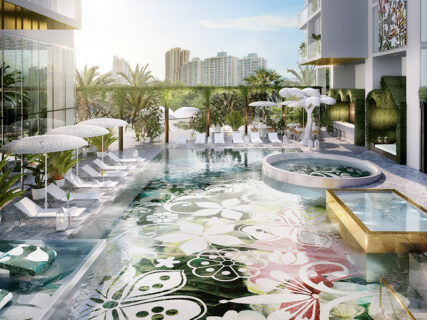Interview with Gabriele Chiave | Designer and Creative Director
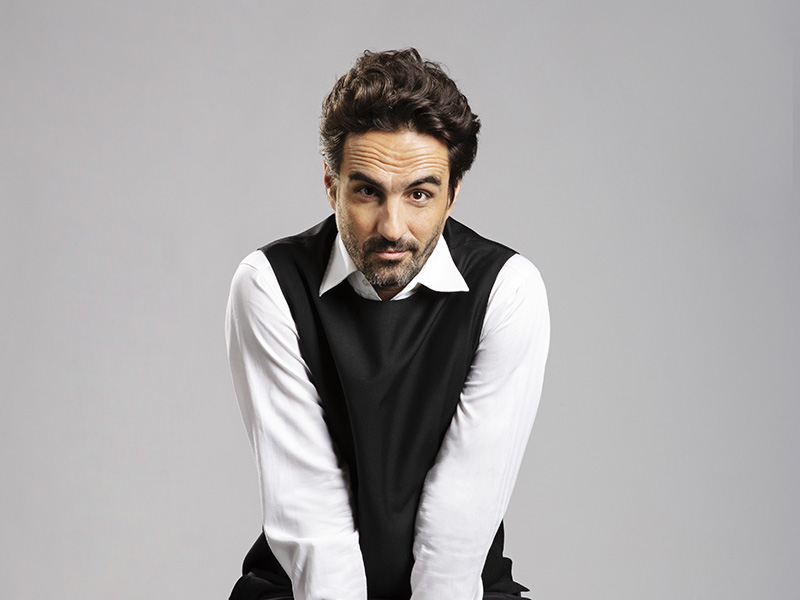 Tell us a little about yourself. Reading about you we understood that your passion for the world of furniture comes from your family. Between great travels and multicultural influences, how much do you think the past has influenced who you are now?
Tell us a little about yourself. Reading about you we understood that your passion for the world of furniture comes from your family. Between great travels and multicultural influences, how much do you think the past has influenced who you are now?
Before starting, i’d like to preface that I was not born with the desire to become a designer. Son of diplomats, I spent my childhood traveling around the world, from France to Senegal, then Argentina, Italy and so on up to today, Holland. The love for design was born, however, because of my family who was really passionate about antique objects and furniture, antiques and modern antiques. While traveling, we always carried our collection of antiques with us, richer at each new stage. Is well known it is the intrinsic property of every object to tell stories, so in that environment I too began to understand the language of that world made of materials and craftsmanship. Traveling all around the world, for me “home” were not walls and structures, but those memories that we carried with us.
How did your journey into the world of design begin? What do you think prompted you to pursue this career?
From this family collection began to grow my great passion for restoration and archeology, both necessary to reveal what is hidden in each piece of the past. At the age of 17 I had the opportunity to take part in an expedition of 15 people organized by Professor Falsone on behalf of the University of Archeology of Palermo in the Euphrates area. For several years some excavations have been concentrated there to bring to light the remains of civilizations dating back to 2,000 – 3,000 BC.
Around that 4×4-meter hole located in the middle of the desert there is a small village of clubs where several study teams come throughout the year, bringing to light finds. It was obviously an incredible experience: I immediately became the mascot of the group and the professor allowed me to experience all the phases of the restoration from A to Z. It was then that I started thinking about how nice it was to find objects capable of telling the story of the past. Hence the idea of continuing that transmission, making myself a first-person participant in that process of creation not only in the past, but also in the future, by designing and planning the next archeology, or even the archeology of tomorrow.
I began studying in Milan at the European Institute of Design, then giving life to numerous projects with Alessi, managing some workshops for architects and designers. I then continued working with some studios in Milan until 14 years ago a Dutchman called me to “visit them” in Amsterdam. It was 2007 and at the time I didn’t expect to stay in Marcel Wanders’ studio for long. But now it’s been 14 years and I think I can say that this reality has become my new home.
What was it like to reinvent yourself from place to place, to start from scratch after studying and working in Italy?
Growing up abroad and constantly moving around, my childhood was very hard. At the time there was nothing, neither Facebook nor the various social networks, so changing cities was a bit like starting from scratch. But going through those stages, allowed me to develop a great adaptability to challenges and life. Personally I believe that living in such different cultures has enriched me a lot, giving me the opportunity to understand that the world is not a territory but a real cultural universe, very rich in all its facets.
As a designer, my baggage consisted of having studied in Milan with the inheritance of masters and a design perspective made up of industry and functionalism. When I arrived in Holland I found myself clashing with the current paradigm, much closer to the world of art and artisan creativity. This resulted in an incredible opening for me to new perspectives and horizons closer to poetics, experimentation and diversity.
Let’s talk about the experience at Marcel Wanders’ studio. What was it like to find yourself in such an environment? What was the first impression?
Working with Wanders I was able to appreciate his being “down to earth”, as well as his personal way of teaming up, creating a real family around him where we talk, discuss, compare and together we reach the solution of every problem. With him I have dedicated myself from the first year to Product Design, becoming responsible for that section. After five years, however, I was offered the position of Creative Director of the entire studio, a very important step since I had never dealt with Interior Design until then. Working with Marcel Wanders is a bit like speaking multiple languages, where each project acquires shape and size from different points of view until it becomes a real three-dimensional reality.
What do you think is the greatest difficulty in approaching Interior Design?
I believe that the meta-design vision between Product and Interior design is fundamentally the same. To design a product, however, one must behave a bit like violinists: knowing one’s instrument in detail, being able to decipher and describe every facet in detail. An Interior Designer, on the other hand, behaves more like an orchestra conductor: more than the single instrument it is important to have an overview capable of combining each single figure with all the others in a harmonious whole. You cannot expect to know the details of everything. When I imagine a product I am inclined to define it in its entirety; but in the Interior, what matters most is the overview.
Another aspect that differentiates these two dimensions is the idea. In the Product you need one, strong, capable of defining it and distinguishing the single piece. In the Interior, however, there must be a thousand. The product has only one life, the Interior has a thousand shades. It is like a melody. The product is an onion, the Interior the whole recipe.
Can you tell us something about the present? What was it like facing this year of change and what do you think will come of it in the future? Do you have projects that the studio is carrying out and that you would like to tell us about?
At the moment the activity of the studio is progressing well, despite the somewhat controversial period. Thanks to the new needs arising from this historical moment, we are above all studying a new way of designing the common spaces of residences and hotels, reviewing their aggregation possibilities. When visiting a city, often the need to understand its essence and true cultural face does not pass only through the structures, but above all through the people. The Wanders studio wants to fit right there, reinventing the concept of Hub where it is possible to have a direct exchange and create junctions not only between travelers and foreigners, but also with the local community. In this period, more than in any other, I believe it is possible to understand this need to bring borders closer, eliminating barriers to create a direct exchange without obstacles.
